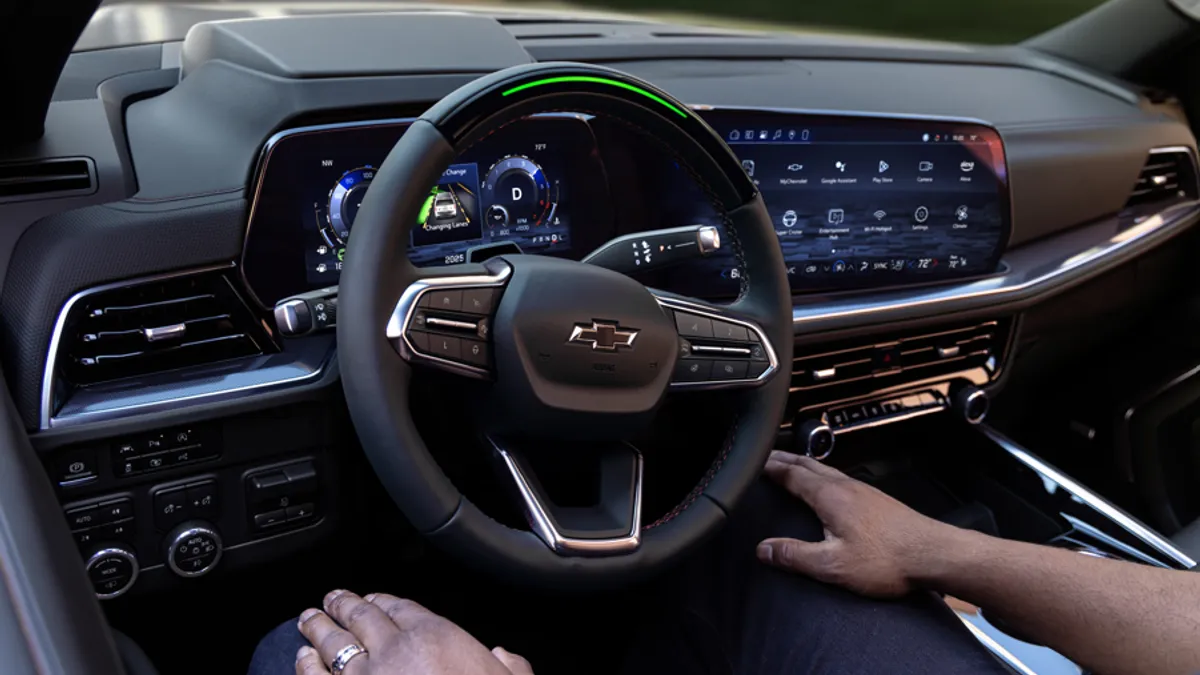Automakers are increasingly turning to in-vehicle edge AI to accelerate development, cut costs and reduce reliance on the cloud. This shift will reshape how cars are built and maintained over the next decade-plus.
Global revenues from automotive AI are projected to hit $48.6 billion by 2034—almost ten times their current levels. While autonomous driving and advanced driver-assistance systems have driven early adoption, the biggest opportunities for original equipment manufacturers are emerging inside the live systems of software-defined vehicles.
A recent case study from COMPREDICT illustrates this clearly. The German software supplier needed seamless access to vehicle data for its Virtual Headlight Leveling Sensor to comply with evolving EU regulations. Using a robust in-vehicle edge AI environment, the company achieved frictionless data integration and rapid deployment—demonstrating how edge AI can accelerate innovation while reducing complexity.
By moving AI from the cloud directly into the vehicle, manufacturers unlock faster decisions, predictive insights and new operational efficiencies, all while reducing reliance on remote networks and cloud.
From cloud reliance to local intelligence
Advanced cars generate terabytes of data every day, yet most of it remains unused. Traditional cloud systems struggle with latency, connectivity gaps and the cost of transmitting, storing and processing massive datasets.
Implementing in-vehicle edge AI in the latest SDVs enables real-time decision-making within the vehicle, reducing latency and enhancing safety-critical functions, including in areas with limited or no connectivity.
Edge AI done right also breaks down silos. Data science, embedded engineering and integration teams can now work in unified workflows. Standardized pipelines enable fleetwide updates—solving a problem that has slowed many AI deployments.
Real-world cases of vehicle data and cybersecurity
Edge AI isn’t just about efficiency. It solves highly diverse problems. Two recent case studies show the breadth of impact:
Algorithm Safeguarding: Dutch semiconductor provider NXP leverages edge AI to make fast, secure real-time decisions by analyzing subsystem data. This approach enhances the protection of vehicle software, supports the detection of anomalous activity, and helps ensure safe operation directly in the vehicle
In-Vehicle Intrusion Protection: Tokyo-based automotive cybersecurity provider VicOne prioritizes subsystem data access and runs large language models in-vehicle. This enables real-time detection and analysis of cyber threats, improving overall vehicle security.
These examples and numerous others show how adaptable edge AI is. Manufacturers can improve safety, compliance and operational intelligence while addressing unique vehicle challenges.
The economics of edge AI: Smarter, faster, cheaper
Processing data locally in the vehicle cuts cloud transfer costs, speeds up algorithm training and execution and extends the life of existing hardware. Predictive diagnostics also shorten repair cycles and reduce warranty claims.
Cloud data transfers get pricey—some providers charge up to $0.15 per GB for outbound data and $0.02 per GB for inter-region transfers. These costs become exorbitant when massive amounts of raw data must be constantly moved off the vehicle and back to the cloud.
By handling data directly in the vehicle, companies can reduce these charges, improve data security and minimize network compliance risks.
Scaling edge intelligence across fleets
Edge AI delivers real-world value only when paired with the right platform. Sonatus AI Director provides end-to-end AI management—covering model training, optimization, validation, in-vehicle deployment, integration and real-time monitoring.
OEMs and suppliers can roll out innovations across fleets efficiently, track performance and iterate quickly. What starts as a test in a single vehicle can scale to measurable impact across an entire lineup.
Four ways in-vehicle edge AI drives value throughout the automotive ecosystem:
-
Automakers gain a common framework to integrate AI models from different suppliers more easily and at lower integration cost
- Tier-1 suppliers gain a powerful new tool to incorporate AI algorithms into the subsystems they create and better leverage the compute capabilities they employ
- Silicon providers gain a more consistent way to provide access to their AI compute capabilities and software optimization platforms for AI
- Suppliers and AI model makers gain easier access to cross-vehicle data, faster integration across multiple vehicle models, and stronger intellectual property protection during deployment
Edge moves beyond experiments with Sonatus. Our latest game-changing platform reduces costs, enhances safety and powers smarter, more capable SDVs—helping automakers not just optimize today, but define the future of mobility.










